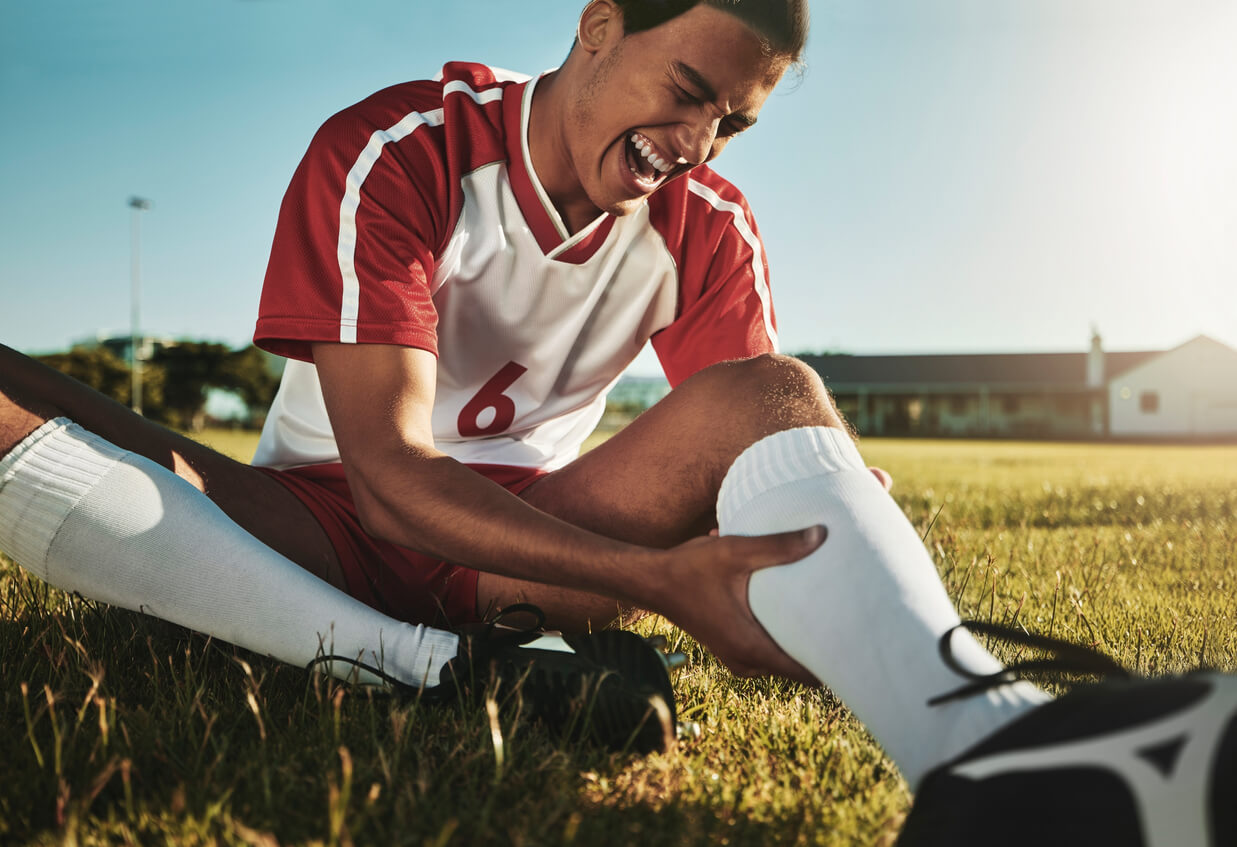
Injuries are a common setback when it comes to sports, whether you’re a weekend warrior or a seasoned athlete. It’s not just the pain or the time taken away from the game that matters, but how common sports injuries can impact your daily life.
This article sheds light on common sports injuries, aiming to make diagnosis, treatment, and prevention accessible to everyone. We’ll explore these injuries, how they can be diagnosed, the various treatment options available, and, most importantly, how to prevent them.
Types of Common Sports Injuries
In the realm of sports injuries, there are two primary categories: acute and chronic.
Acute Injuries
Acute injuries are those that occur suddenly during physical activities. These include:
- Sprains – where ligaments are overstretched or torn, commonly in ankles and knees.
- Strains – involving the overstretching or tearing of muscles or tendons, often seen in the groin and hamstring.
- Fractures – which are breaks in the bone ranging from small cracks to complete breaks.
- Dislocations – when a bone slips out of its place, frequently affecting shoulders and fingers
Chronic Injuries
Chronic injuries, on the other hand, emerge over time due to the overuse of a body part.
- Tendinitis – the inflammation of a tendon, is often found in the shoulder, elbow, knee, or Achilles tendon.
- Stress fractures – small cracks in a bone caused by repetitive force, are common in legs and feet.
- Bursitis – the inflammation of the bursae, the fluid-filled sacs that cushion bones, tendons, and muscles, and often occurs in the hip, knee, elbow, or shoulder.
Diagnosis of Sports Injuries
Diagnosing a sports injury typically begins with a clinical assessment by a healthcare provider, who takes a medical history and conducts a physical examination. They evaluate the following:
- The pain’s location and intensity
- Your range of motion
- The presence of swelling or bruising
- Any functional limitations
To confirm a diagnosis, imaging tests might be used, such as the following:
- X-rays for detecting fractures and dislocations
- MRI for detailed images of soft tissues
- CT scans for a more detailed view of bone injuries
- Ultrasound to visualize muscles, tendons, and ligaments in motion
Treatment Options for Sports Injuries
Different treatment methods play a vital role in the recovery from sports injuries.
The choice of treatment depends on the type and severity of the injury, as well as the individual’s overall health and activity goals.
The primary aim is to ensure effective healing, minimize the risk of re-injury, and facilitate a successful return to sports activities.
Initial Management
The treatment of sports injuries typically begins with initial management, which includes rest. It is essential for the healing process and helps in preventing further damage.
Applying ice to the injured area reduces swelling and alleviates pain, while compression using bandages or special wraps helps decrease swelling.
Elevating the injured part above the heart level is another effective strategy to reduce swelling.
Physical Therapy and Rehabilitation
Physical therapy and rehabilitation involve exercises tailored to improve strength, flexibility, and range of motion. Therapists may also use massage and heat treatment to facilitate healing and reduce pain.
In some cases, ultrasound therapy is used to promote tissue healing and alleviate pain.
Pain Management
Pain management is an important aspect of treating sports injuries.
Non-steroidal anti-inflammatory drugs (NSAIDs) are commonly used for this purpose, as they help in reducing pain and inflammation.
In situations where immobilization of the injured area is necessary, a splint, cast, or brace may be used. These devices protect and immobilize the area, aiding in the healing process.
Surgical Interventions
For more severe injuries, surgical interventions may be required.
Arthroscopic surgery, a minimally invasive procedure, is often used for joint injuries. This involves small incisions and the use of a camera for a detailed view and treatment of the problem.
Reconstructive surgery is another option, particularly for repairing or replacing torn ligaments or tendons.
In the case of fractures, especially those that are displaced or unstable, surgical repair might involve the use of metal rods, screws, or plates to hold the broken bones in place.
Post-Surgical Rehabilitation
Post-surgical rehabilitation is crucial to the treatment process. It typically involves a gradual return to activity, ensuring a safe and effective recovery.
The rehabilitation process is customized to each individual’s needs. It aims at:
- Regaining strength, flexibility, and balance
- Reducing the risk of re-injury
- Ensuring a successful return to sports activities
Prevention of Sports Injuries
Preventing sports injuries involves a comprehensive approach that includes:
- Proper training and conditioning
- Strength training to build muscle strength and endurance
- Flexibility exercises to improve the range of motion
- Learning proper techniques to reduce the risk of injury
- Using appropriate gear
- Eating a balanced diet
- Hydrating regularly
- Resting well
Lastly, education and awareness about the risks associated with different sports are important. Seeking professional advice for training routines and injury prevention strategies is key, as well.
The Best Sports Medicine Doctor in Austin, TX
Navigating the world of sports injuries can be daunting, but armed with the right information, it becomes much more manageable. Remember, the key to effective recovery lies in timely diagnosis, appropriate treatment, and preventive measures. Stay informed, stay safe, and enjoy the sports you love with confidence and care.
You can rely on All-Star Orthopedics of Austin’s Dr. Carolyn Hyde if you are searching for the best sports medicine doctor in Austin, TX. Under her care, you can rest assured you will receive the high-quality sports injury care you deserve. You may call our helpful staff today at (512) 346-4933 to learn about our services. You may also schedule a visit to the best orthopedic surgeon near you by submitting an online request form.
We look forward to serving you!





